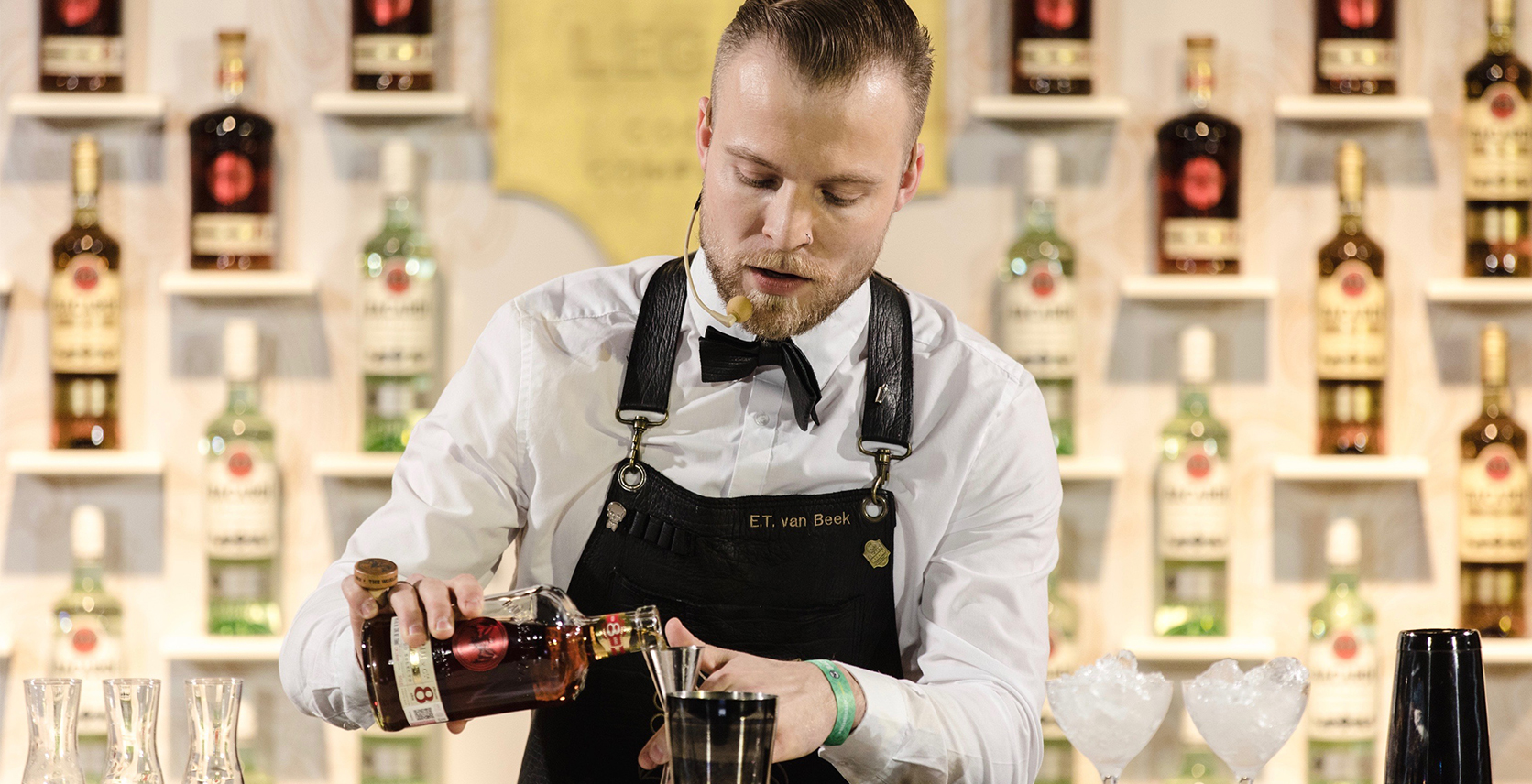In Search of the Next Mojito at the 10th Bacardi Legacy Global Cocktail Competition
Every time Sabrina Mailhot tells someone she’s a bartender, she almost always gets the same response: “‘Oh, but what do you really do’?” says the Quebecer, who works at Montreal speakeasy The Coldroom. “And I’ll say, ‘No, I’m a bartender. That’s my career. And they be like, ‘But what do you do?’”
For Mailhot, making drinks is no side hustle — it’s a calling. “People think this is just your side job, but not at all! We’re actually very, very passionate about what we do.”
That point was made clear as an unaged rum last week in Mexico City, where Mailhot battled 33 of the world’s top bartenders at the 10th Bacardi Legacy Global Cocktail Competition. After poring over thousands of entries from 45 countries, the Bacardi team whittled their selection pool down to 34 contenders, each of whom was tasked with creating their own timeless cocktail that could stand alongside rum-based staples like the Mojito, the Daiquiri, and the Cuba Libre. In its decade of existence, the competition has birthed several modern classics, including last year’s winner, the Clarita, created by Belgium’s Ran Van Ongevalle, which can now be ordered at bars across the globe.
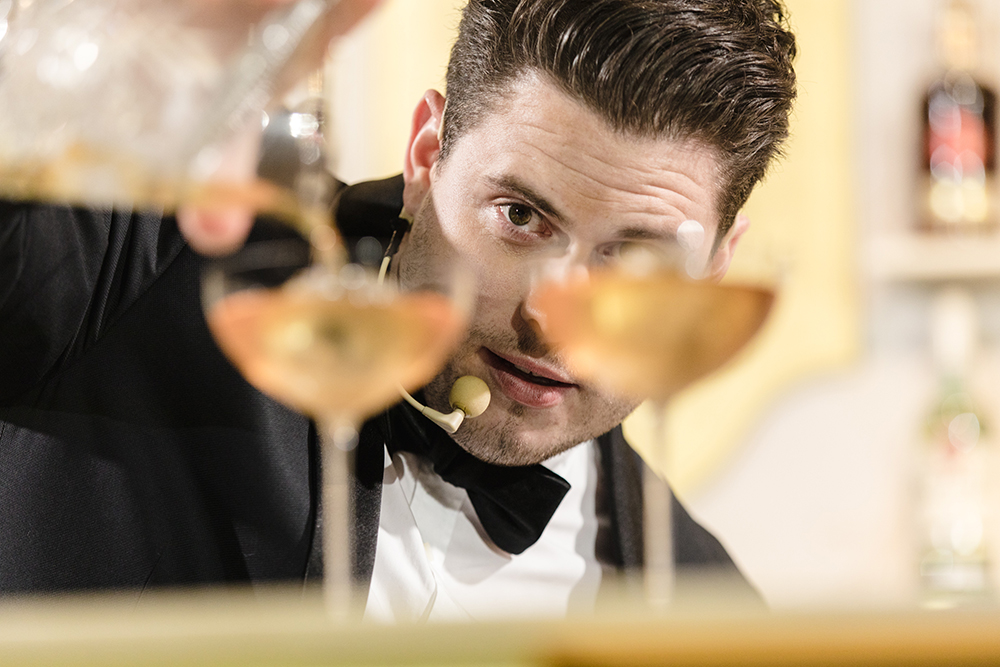
Like every competitor, Mailhot, the only Canadian finalist, had nine minutes to make her drink and tell its story before a panel of judges and a 200-strong audience of industry insiders. The concoction in question: the Séquito (Spanish for “entourage”). It features two ounces of Bacardi Reserva Ocho, Angostura bitters, an ounce of orange juice, a half-ounce each of lime juice and grenadine, and a quarter-ounce of banana liqueur. Everything is shaken and served in a coupette. Bacardi’s only guidelines: the drinks must be easily replicable around the world, with no ingredients that are hard to find or make.
“It involved weeks of reading old cocktail books to see if this combination of ingredients had been done before or not,” says Mailhot, who made it to the top 16 over two days of competition. “It was a real challenge.”
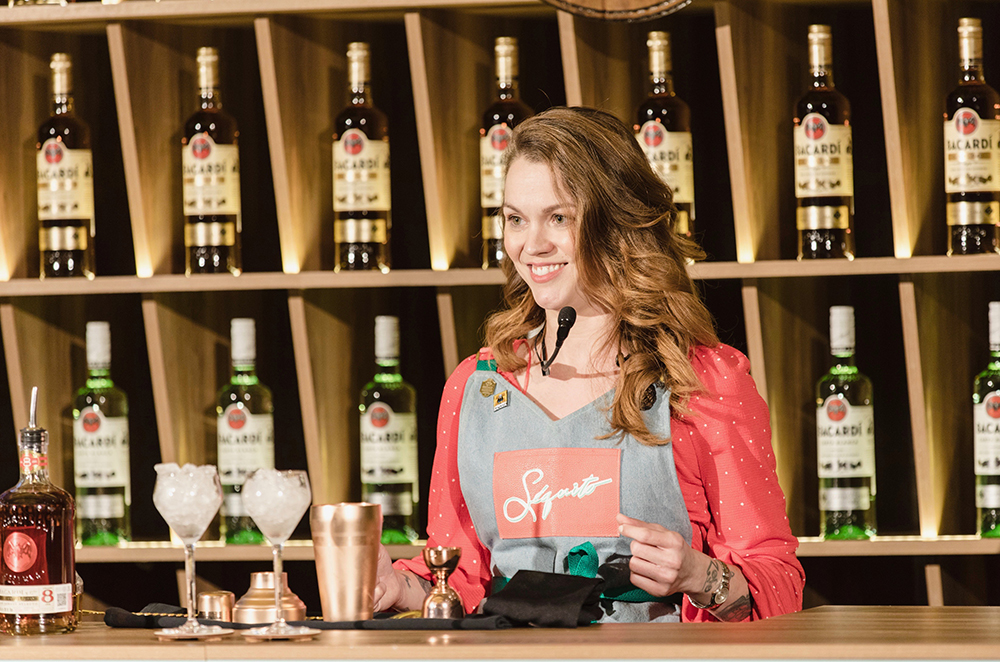
And perhaps that’s the point — Bacardi’s aim, from what I witness in sunny Mexico, is to dare the world’s mixologists to push the limits of their abilities, by way of testing their chops against one another. As iron sharpens iron, so one tiki shirt-adorned barkeep sharpens another. But what, really, is in it for Bacardi?
For starters, cocktails have long been the brand’s calling card. “Bacardi, as a brand that’s over 155 years old, has really been woven into consumers’ lives by classic cocktails that were created along the way throughout history,” explains Bacardi vice president and brand managing director Ned Duggan. “If you look at the Daiquiri, the Mojito, and the Presidente, those really became iconic drinks that defined Bacardi and what it meant to consumers. So, for us, it’s about looking for the next cocktail that’s going to define that next generation.”
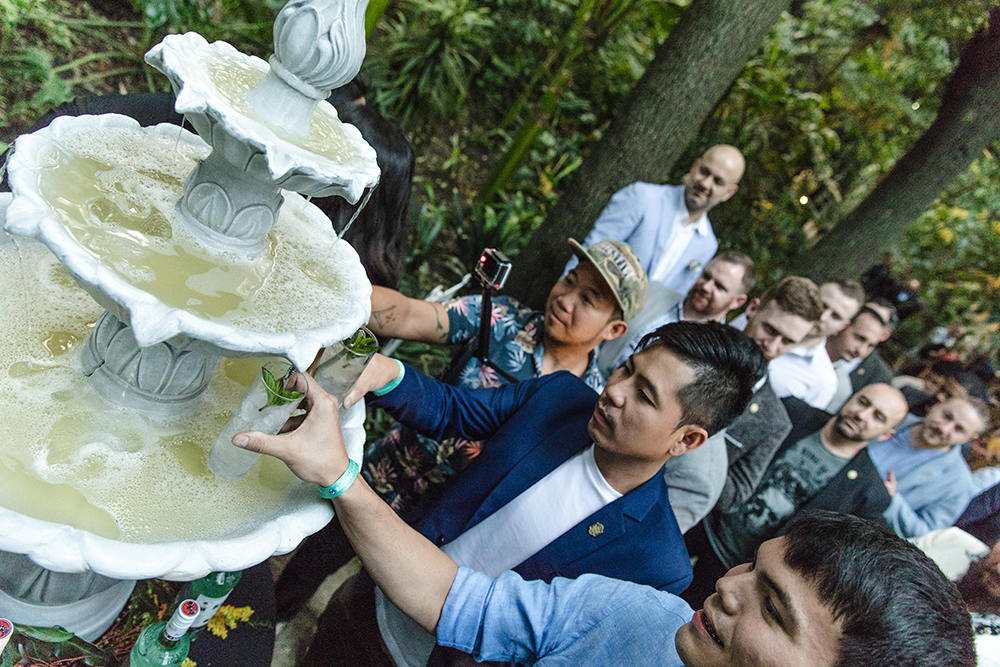
And this mixed drink R&D exercise couldn’t come at a better time. Craft cocktail culture — after seeing a renaissance in North America and Britain over the last decade — is now going supernova internationally. Just about every major city currently has a bourgeoning mixology scene filled with high-end bars teeming with space-age ingredients and outré décor. Bartenders are the new celebrity chefs, many of them attracting global followings with their mad scientist-esque zeal for atypical flavours and out-of-the-box libations.
Bacardi’s competition, then, is something of a heat check on an already-scalding-hot industry. But it also serves as the brand’s ear to the ground of the cocktail scene. “It’s a great way for us to stay in constant communication with the bartenders driving the industry, and learn from them what’s going on in it, and what excites them,” says Duggan. At last year’s competition in Berlin, for instance, banana was a flavour used predominantly by the contestants. “It was obviously something that was very on-trend, so we introduced a banana-flavoured rum in the U.S. last year.”
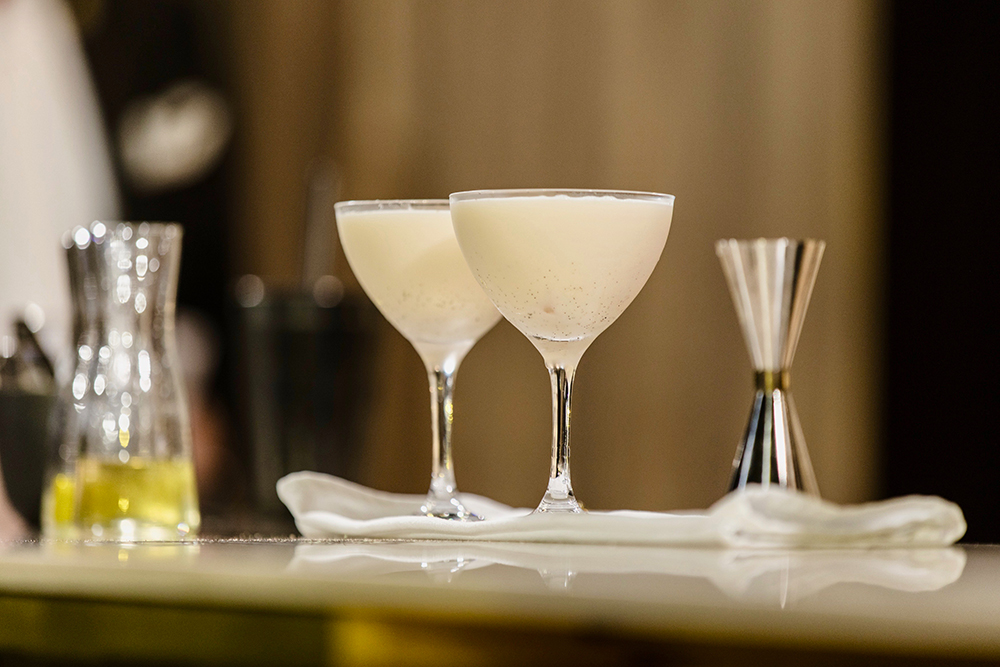
This year’s winning creation, by Netherlands’ Erik Van Beek, is the Cariño: a shaken cocktail combining Bacardí Reserva Ocho rum with Yellow Chartreuse, Greek yoghurt, vanilla syrup and lemon juice. Could this mean Greek yoghurt is the next trend to take the booze world by storm?
Never say never, though a more likely candidate might be barrel-aged rum. Nearly every finalist at this year’s competition used Bacardi Reserva Ocho — the distiller’s eight-year-old rum — by their own accord. “It’s interesting to see them gravitate toward dark, premium rum, because that’s something we’ve identified as a growth opportunity for a long time,” says Duggan. “They’re actually validating that without being asked to do so.”
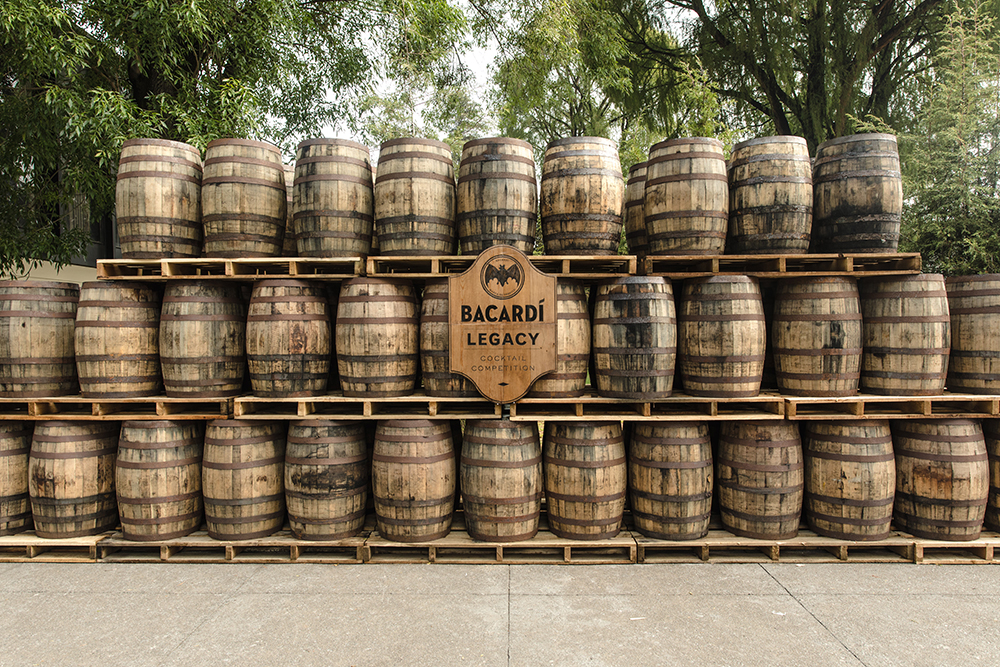
Indeed, along with repackaging the Ocho, this spring the brand has unveiled two new premium selections: Bacardi Añejo Cuatro, barrel-aged a minimum of four years, and Bacardi Gran Reserva Diez, barrel-aged a minimum of 10 years. Duggan believes these mature varieties of rum — along with the healthy interest in them among bartenders — will open the door to a more sophisticated era for the spirit. “The last frontier of premium spirits is in the rum category,” he predicts. “More people are looking at rum in a more serious way, looking at the craftsmanship around it in the same way they did with tequila and whiskey five or 10 years ago. They’re seeing it as more than something you should just drink with coke.”
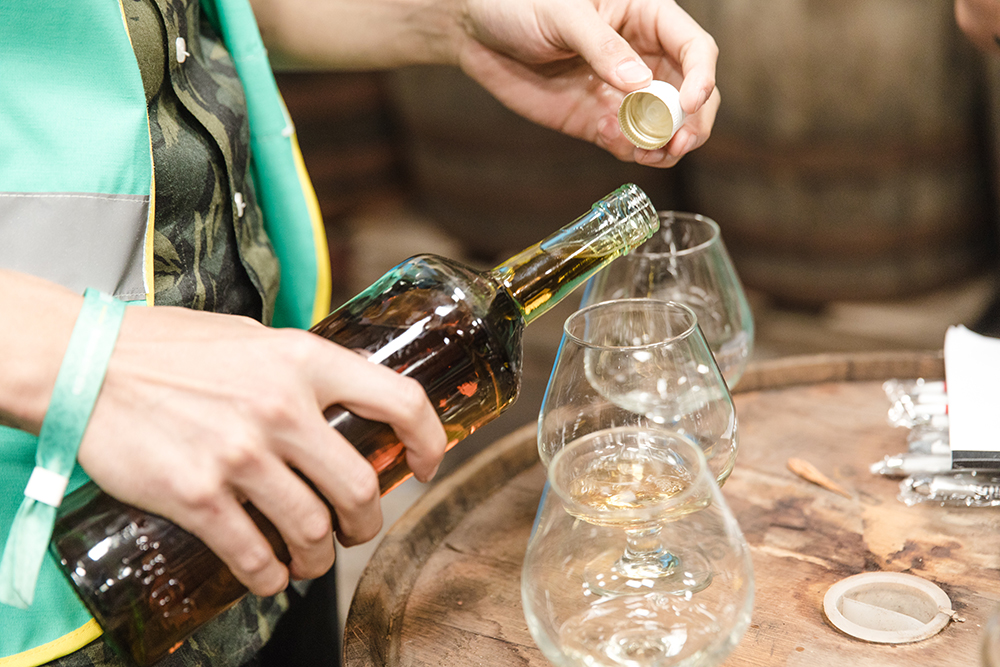
He may just be onto something. Just check out the tiki bar renaissance sweeping North America, or the increasing number of barkeeps substituting rum for other brown spirits in classic drinks like Manhattans or Old Fashioneds. All this would suggest premium rum-based cocktails are here to stay for a while — as are the folks making them.
“People are recognizing what a great cocktail is — it’s not uncommon today for someone to pay $25 for one,” notes Duggan. “When you’re paying that much for a drink, you want to know it’s coming from someone who knows what they’re doing. There’s a lot more respect that goes with being a bartender now — it’s not just a summer job.”
